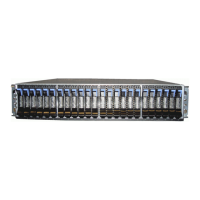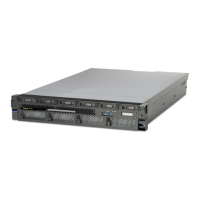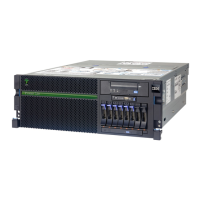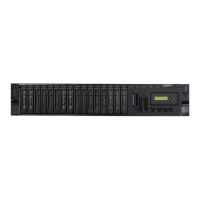4405ch02 Architecture and technical overview.fm Draft Document for Review May 28, 2009 1:59 pm
36 IBM Power 570 Technical Overview and Introduction
Two 64-bit PCI-X 2.0 buses, one 64-bit PCI-X 1.0 bus, and one 32-bit PCI-X 1.0 bus
Four 8x PCI Express links
Two 10 Gbps Ethernet ports: Each port is individually configurable to function as two
1 Gb/s port
In a fully populated 570, there are two GX+ buses, one from each processor. Each 570 has 2
GX+ slots with a single GX+ bus. The GX+ multifunctional host bridge provide a dedicated
GX+ bus routed to the first GX+ slot through GX+ passthru bus. The second GX+ slot is not
active unless the second processor card is installed. It is not required for CoD cards to be
activated in order for the associated GX+ bus to be active.
Optional Dual port RIO-2 I/O Hub (FC 1800) and Dual port 12x Channel Attach (FC 1802)
adapters that are installed in the GX+ slots are used for external DASD and IO drawer
expansion. All GX+ cards are Hot-Pluggable.
Table 2-4 provides I/O bandwidth of 4.7 GHz processors configuration.
Table 2-4 I/O bandwidth
2.5.2 Service processor bus
The Service Processor (SP) flex cable is at the rear of the system and is used for SP
communication between the system drawers. The SP cable remains similar to the p5 570 in
that there is a unique SP cable for each configuration, but the p5 570 SP cables cannot be
used for 570. Although, SP function is implemented in system drawer 1 and system drawer 2,
Service interface card is required in every system drawer for signal distribution functions
inside the system drawer. There is a unique SP cable for each drawer as Figure 2-9 on
page 37 shows.
I/O Bandwidth
Total I/O 62.6 GB/sec (16-cores)
Primary GX Bus 9.4 GB/sec (per node)
GX Bus Slot 1 4.7 GB/sec (per node)
GX Bus Slot 2 6.266 GB/sec (per node)
